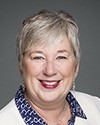The Icelandic cod fishery has gone through some rocky periods in the last 40 years or so. To start at the beginning, during the cod wars in the seventies, there was a high pressure on fishing. With the extension of the exclusive economic zone in 1976, we finally got control of our fishing shelf. That led to a decrease in fishing pressure soon afterwards, but Icelanders were quick to pick up, and in the early eighties, the situation was quite bleak in Iceland. At that time, there were various management proposals done or management measures taken in terms of trying to control fishing efforts, but it was politically very difficult. The advice from the scientists was often not heeded or was partly heeded. That led to fishing far beyond the recommended catch levels.
In the early nineties, it was apparent that things were not working out very well. In 1984, there had been a mixture of a TAC and an effort control system put in place. That was instituted for vessels larger than 10 metric tons. That really did not work well, because vessels could leave the system and then come back into it, and they somehow got new shares and so on. It really was not working. The effort option was taken out of the system in the 1990s with the Fisheries Management Act of 1990, which came into full force in the 1991-92 fishing season. Vessels that were smaller than 10 metric tons were exempt from the ITQ system, but gradually they were also taken into the system, with boats larger than six tonnes in 2001. In 2003, most of them were under the ITQ system.
As for how the quota was set up until the 1991-92 fishing year, the TAC was set at a certain level based on scientific advice, but as I said earlier, it was not always heeded. Then they made some allocations for various socio-economic factors in the system. It became apparent that this was also not really working. In the early 1990s, there was this governmental committee that was given the task of coming up with a harvest control rule, which took into account various parts.... It was based on making a sustainable profitable fishery. That was the objective. They came up with a certain type of harvest control rule for fishing roughly 22% of the “reference biomass” each year. That is a technical term that basically means cod older than four years.
However, in consultations with the stakeholders and politicians, this percentage was increased to 25%, and there was also some sort of a buffer in the rule. The rule seemed to be working in the beginning, but in the year 2000 it became apparent that the Marine Research Institute had overestimated stock size. Also, because of some technical issues in the fisheries management system, there was often quite a lot of overshot in the fishing.
The latest amendment to the harvest control rule was for the 2007-08 fishing season, when they decreased the percentage to 20%. Since then, we have seen a rapid increase both in the spawning stock biomass and in the reference biomass, the biomass age four years and older. Of course, subsequently we have seen a lot of reduction in fishing pressure. On top of that, there has been various other effects. For example, the hours trawled inside our exclusive economic zone have decreased a lot after we managed to decrease the fishing pressure. The trawl footprint has decreased a lot.
The situation is now such that the stock will probably not get any larger. Given the current recruitment level, the stock is, at that stage, kind of in balance. We do not really expect to see more catches landed, somewhere between 200,000 to 250,000 tonnes a year, unless recruitment starts picking up again. The average recruitment in the last 30 years is considerably lower than it was in the past.
The good news is that on the horizon there are probably one or two year classes that will enter the fisheries in the next two or three years. It looks like they are going to be quite large, so hopefully we may break away from this 200,000 to 250,000 tonnes of codfish we currently have.
I think that has summarized the management history and how things have been going. In short, for the last 10 years or so, the stock has increased a lot. That has mostly been because the cod is getting older and living longer, not because of a huge recruitment.
That's the short story from Iceland.
Thank you.


